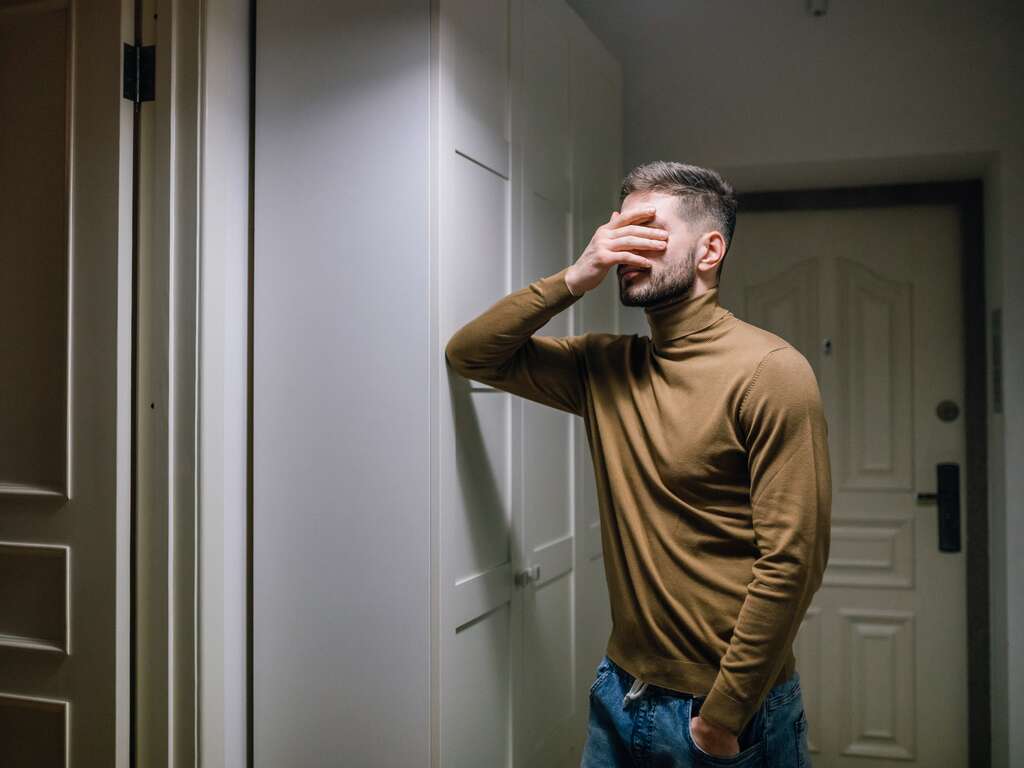In today’s fast-paced and busy world, anxiety disorders are common. Everyone has a unique life and faces various challenges and situations which can lead to anxiety symptoms. Anxiety disorders are characterized by sensations of worry, dread, and unease, and anxiety symptoms can be typical stress responses. This occurs when we feel too much pressure or an imposing threat when we are in certain situations we feel are unmanageable.
While living in a world that is far from perfect, being in a situation where we feel anxiety symptoms is natural, as anxiety is a normal emotion that everyone experiences sometimes. However, if you consistently feel over-powering worry and extreme fear that interferes with your daily life, these anxiety symptoms could be different, and even indicative of a more serious problem, such as any of the various anxiety disorders.
Anxiety disorders are mental health issues which induce excessive and persistent dread and terror in those who suffer them. There are many types of anxiety disorders but the most common anxiety disorder is Generalized Anxiety Disorder, which is a condition that is defined by excessive worry about any number of things that is never-ending and often irrational.
According to the Anxiety and Depression Association of America, 6.8 million adults, or 3.1% of the population in the United States, are suffering from Generalized Anxiety Disorder; and recent statistics from Statista show that approximately 29% of Americans aged 18 and over reported having anxiety disorders between June 29 and July 11, 2022.
Today, anxiety disorders are becoming more commonly correlated to alcoholism, a disease that approximately 15 million Americans struggle with on any given day. This could be because of how alcohol has frequently been cited as the number one coping mechanism for people with anxiety disorders. 20% or more of those with alcohol use disorders also struggle with anxiety.
Alcoholism and Anxiety are serious conditions that need special attention. This article will go into greater detail about alcoholism and anxiety, their connection, and the reasons why it’s crucial to get help if you or a loved one is suffering from alcoholism or anxiety disorders.
What Exactly Is Anxiety?
Today, many people use the word “anxiety” as a self-diagnosis, which is understandable considering that anxiety symptoms commonly arise from your brain’s response to stress to warn you of potential danger. Every time people are worried or hesitant about a new event or social situation, they cling to the word “anxiety.” For example, a person may have anxiety if they are dealing with a challenging situation at work or school, such as an exam, or delivering a huge presentation during a meeting. A person can feel anxiety before making a big decision that will greatly impact their life.
Feeling anxiety symptoms is normal, but anxiety disorders are a different story. If ignored, true anxiety disorders can be considerably more serious and can be the catalyst for people to self-medicate. If a person is suffering from one of the many types of anxiety disorders, the worry and fear they constantly experience will greatly affect their life and make it difficult to get through the day.
Types of Anxiety Disorders

Anxiety is not a single, universal diagnosis. In fact, there are several different types of anxiety disorders. To better understand what anxiety disorders are, here are a few different types.
Generalized Anxiety Disorder
Generalized anxiety disorder, or GAD, is characterized by a persistent state of worry and stress in daily life. This typically manifests as phobias, irrational fears, and paranoia. For instance, ongoing worries that something bad will happen to you such as a break-in or a fire in your home can be symptoms of GAD, but so can something as vague as a general sense of impending doom and ominousness.
Sadly, generalized anxiety disorder leads many people to self-medicate with alcohol. Alcohol tends to be a major contributing factor in how people handle and manage their condition. Symptoms include:
- Feeling tense, anxious, or restless
- Untreated depression
- Being prone to fatigue
- Having trouble staying focused
- Having a bad mood
- Headaches
- Muscular pain
- Stomachaches
- Unexplained pains
- Uncontrollable worries
- Difficulty in falling or staying asleep
Social Anxiety Disorder

Social anxiety disorder is characterized by persistent worry in social situations. When someone expects or is engaged in a social scenario, they actually become physically ill. This is not merely shyness, as many people mistake it to be. It is a mental health disorder that causes a debilitating fear of social encounters. Social anxiety disorder can lead to agoraphobia, which is the fear of being stranded far from home. If a person with social anxiety disorder isn’t allowed home, they begin to imagine terrible things taking place at home without them there to prevent them.
Nevertheless, the fear of what other people will think of them is the phobia that manifests itself most frequently in social anxiety disorder. It feels like being in a hostile environment where people are making fun of you, laughing at you, or speaking negatively of you. Social anxiety disorder can lead to an emotional state that can cause a mental breakdown and physical symptoms like nausea or stomach aches. Symptoms include:
- Blushing, perspiring, or shaking
- Rapid or pounding heart
- Stomachaches
- Nausea
- Stiffness of posture or excessive huskiness of voice
- Having trouble looking someone in the eye or being around strangers
- Feelings of insecurity or worry that others would evaluate them poorly
Obsessive-Compulsive Disorder (OCD)
Obsessive-Compulsive Disorder, commonly known as OCD, is defined by recurring, uncontrollable, intrusive thoughts pertaining to one or multiple obsessions and the compulsive behaviors a person repeats in an effort to keep the intrusive thoughts from being true or to keep something bad from happening. The more commonly known compulsions include hand washing, cleaning, checking locks and doors, and counting. But, OCD is a much more than what the general public perceives it to be and even jokes about it as being. Most compulsions are rooted in the person suffering from OCD seeking assurance that things are going to be okay. For this reason, they may also compulsively tell their partners that they love them just to make sure that their partners still love them too, while others might repeat prayers or chants to themselves periodically if their OCD is of the variety that involves magical thinking. Engaging in these repetitive actions does not reduce the patient’s anxiety. And even if it seems too, the amount of time for which the anxiety is absent is microscopic to the point of being almost always unnoticeable.
Doctors recommend that friends and loved ones of patients with OCD do not constantly shower them with reassurance and that they also — in as kind and gentle a way as possible — try to disrupt the patterns of the compulsive behaviors. In fact, it is almost universally agreed upon by mental health professionals that family and friends remind the patients that there really is no certainty that everything will be okay, because even if all precautions are taken, there is no way to predict what might come in the future. People living without OCD live in this ambiguous reality every day, and it is important that those with OCD learn to live within it as well in order to lead healthy, functional lives. Symptoms include but are not limited to:
- Excessive repetition of a single action such as cleaning, counting, repeating phrases, etc.
- Continuously checking things like the locks on doors or the stove to make sure it is off
- Suddenly begins counting when at a loss
- Excessively organizing or rearranging
- Hoarding
- Always asking for assurance
- The need to think “neutralizing” thoughts to combat obsessional thought
Panic Disorder
Panic disorder is a mental illness that is characterized by sporadic, severe experiences of fear and anxiety in an unanticipated occurrence. Depending on how intense their anxiety is, it may be accompanied by bodily symptoms like abdominal pain, heart palpitations, shortness of breath, dizziness, or chest pain. These unanticipated occurrences are also known as panic attacks. Panic attacks are characterized by a rapid surge of fear or discomfort or a feeling of losing control even when there is no obvious risk or danger. Panic attacks can start because of a specific circumstance, or they may just happen randomly. Symptoms include:
- Sweating
- Trembling
- Pounding or racing heart
- Chest pain
- Nausea
- Thoughts of impending disaster
- Feelings of being out of control
Post-Traumatic Stress Disorder
Post-traumatic stress disorder, also known as PTSD, is an anxiety disorder that can appear after a traumatic experience in which the person was afraid for their own life or safety. Violent personal attacks, natural disasters, car accidents, military conflict, sexual assault, and child abuse are the most common examples of traumatic events that might lead to PTSD.
Similar to panic disorder, PTSD can be either triggered by someone or something or happen at random. People with PTSD suffer a recurrence of the stress they initially experienced at the time of the inciting traumatic event. It is like they are reliving the exact traumatic event for the very first time with emotions at those exact same heights. Symptoms include:
- Reliving the upsetting experience as though it were going to happen again (Flashbacks)
- Disturbing nightmares or dreams involving the horrific occurrence
- Severe mental health discomfort or adverse physical responses to things that bring back terrible memories
- Being prone to being surprised or alarmed
- Being constantly alert for danger
- Self-destructive conduct, such as binge drinking alcohol
- Difficulty sleeping
- Difficulty concentrating
- Untreated depression
- Anger flare-ups, irritability, or violent conduct
The Connection Between Alcohol and Anxiety

Alcoholism and anxiety are frequently co-occurring in a person. Many people drink alcohol to take the edge off their anxiety without realizing that this is actually making the symptoms of anxiety far worse. Alcohol abuse and anxiety disorders often go hand-in-hand, and in doing so will inevitably not only impact one another, but also a person’s ability to function normally beyond just the bounds and limitations of their anxiety disorders.
Unfortunately, a lot of people still believe that alcohol can be utilized to manage or relieve anxiety, but this is nothing more than a widespread misconception based on nothing more than wishful thinking.
Effects of Alcohol
Alcohol is a psychoactive substance that serves as a depressant, slowing down the brain and central nervous system functions while temporarily reducing inhibitions and thereby elevating short-lived euphoria. In doing so, alcohol slows down the activity of your brain’s neurons, resulting in slower nerve impulse transmission. This could result in poor coordination and feeling a heaviness in your body.
Many people find drinking the feeling of alcohol’s effects on the central nervous system relaxing, and therefore they drink to unwind. It is because alcohol has a potent effect on the brain’s serotonin and other neurotransmitter levels. However, how alcohol affects the brain and your body, can increase anxiety. It is true that people might experience a brief increase in relaxation when the alcohol content affects the brain, but these feelings of being relaxed only come in short-lived doses. In fact, there is only a short window of this euphoria before you begin losing your faculties, such as walking straight, sitting up straight, supporting yourself while standing, and of course the use of your motor skills. Upon realizing that you’ve hit this “sloppy” stage of being drunk, your anxiety symptoms will begin to rise again. Here are some other things you may experience as you continue to drink:
- Drowsiness
- A feeling of euphoria
- Mood change
- Reduced inhibitions
- Impulsive acts
- Slurred or sluggish speech
- Nauseous and dizziness
- Gastrointestinal upset
- Headache and sensitivity to light
- Reduced hearing, vision, and perception
- Inability to coordinate
- Difficulty concentrating or making decisions
- Gaps in memory or loss of consciousness
There is a great connection between alcohol abuse and a variety of mental health and behavioral disorders, other noncommunicable diseases, and injuries. In addition to its link to anxiety, the World Health Organization states that alcohol abuse is a contributing factor in more than 200 illness and injury situations. Alcohol abuse causes 3 million deaths worldwide each year. This accounts for 5.3% of all fatalities. Beyond negative effects on health, alcohol abuse has a negative social and economic impact on both the person and society as a whole. Early in life, alcohol abuse results in negative consequences, mortality, and impairment.
As a result, alcohol is not the answer to anxiety; it is merely a band-aid fix that doesn’t even work at all and may even have a worse effect than good.
Alcoholism

Alcoholism is a long-term, progressive, and potentially lethal condition characterized by excessive and frequently compulsive alcohol consumption that results in psychological and physical dependence or addiction. Alcoholism is typically characterized by an inability to control alcohol consumption, impairment of work and social functioning, a propensity to drink alone and act violently, neglect of physical appearance and proper nutrition, alcohol-related illnesses like cirrhosis of the liver or hepatitis, and moderate to severe withdrawal symptoms after detoxification like agitation, anxiety, tremors, insomnia, and confusion.
In simple terms, alcoholism is alcohol addiction. Medical experts use the diagnosis of alcohol use disorder (AUD) to identify people who have varying degrees of alcohol problem or addiction.
The majority of adults in America have drank alcohol at least once in their lives. 6.7% of them experience alcoholism or alcohol use disorder. According to National Center for Drug Abuse Statistics, 10.2% of Americans 12 years and older had an alcohol use disorder in 2020. 24.0% of adults (18 years and older) reported binge drinking. The frightening thing is that 385 Americans pass away each day as a result of binge drinking, with people 35 and older accounting for 3.9% of these fatalities. Lastly, alcohol abuse causes up to 3 million deaths globally each year.
Symptoms of Alcohol Use Disorder
The severity of an alcohol use disorder depends on how many symptoms you experience. Some warning symptoms and indicators include:
- Being unable to control how many alcoholic beverages you consume
- Experiencing a strong desire, cravings, and impulse to consume alcohol
- Reached a point of wishing to cut back on your drinking or making vain attempts to accomplish so
- Failure to meet significant duties at job, school, or home as a result of frequent alcohol use
- Drinking alcohol while being aware that it’s harming your health, relationships, society, job, or other aspects of your life
- Giving up or scaling back on hobbies, social activities, and employment to consume alcohol
- Consuming alcohol even in unsafe circumstances, such as while driving, operating machinery, or swimming
- Having a diminished or no effect from the same amount of alcohol due to the development of a tolerance to it
- Consuming alcohol to prevent withdrawal symptoms, such as nausea, shivering, and sweating, from occurring when you don’t drink
- A sudden increase in drinking habits
- Feeling Anxious if can’t drink alcohol
Anxiety disorders are a serious issue, but alcoholism is considerably more severe. It can make anxiety worse and could be dangerous by itself.
Reasons Why People Experience Anxiety After Drinking

Almost all hangovers include some form of pain, such as a headache or muscle aches. However, according to a study published by the National Library of Medicine, those who catastrophize their pain—that is, have a propensity to exaggerate it or anticipate the worst—are more prone to experience anxiety.
Those who are prone to anxiousness may also be more vulnerable to anxiety after drinking alcohol. By the time the effects of alcohol wear off, anxiety will have doubled due to the sudden realization of what might occur while you were intoxicated. Additionally, because alcohol is still having an impact on your brain, your level of anxiety may rise as a result of your inability to think clearly, which will feed your mind with more terrifying ideas and make you imagine things that will make you feel even more anxious.
Negative people who drink alcohol will have mood swings and anxiety after a hangover, or if the alcohol wears off. Even those who claim to be extremely shy have been found to have greater levels of anxiety, which may be related to signs of alcohol use disorder.
People with post-traumatic stress disorder will choose to drink to forget those horrible experiences. However, the effect of alcohol is temporary. Once the alcohol wears off, the anxiety worsens and the suffering continues. If a person is dependent on alcohol, it can lead to alcoholism, which then they’ll find it difficult to recover from traumatic events. This is because of the effects of alcohol consumption, which can alter brain activity.
Heavy drinkers for a long time can be more prone to anxiety and mental health disorders. In addition, increased anxiety can also be a sign of alcohol withdrawal. This is one good reason why alcoholism and anxiety are co-occurring disorders. The alcohol withdrawal symptoms can make you feel more anxious if you’ve been drinking heavily for a while and then quit all at once.
Alcohol withdrawal symptoms that might heighten anxiety include:
- Shaking hands
- Sweating
- Heartbeats per minute (bpm) greater than 100
- Hallucinations
- Nausea
- Vomiting
- Seizures
Alcohol Addiction Treatment
Alcohol is not the answer to anxiety. Alcohol dependence can result in addiction which can lead to serious physical and mental health issues. Alcohol addiction and alcohol use disorder, sometimes known as alcoholism, is a medical illness that requires proper addiction treatment.
If you or a loved one suffers from anxiety and uses alcohol to cope, it’s crucial that you seek help from your doctor or a mental health expert. If you need assistance managing mental health disorders or an alcohol use disorder, it is never too late.
Anxiety and alcohol use problems can both be successfully treated. It will be much easier to manage anxiety once alcoholism has been treated.
Detoxification
One way for treating alcoholism is to cleanse your body of alcohol. Alcohol detoxification is the process the body goes through to try and get rid of the toxins and alcohol left behind from chronic, heavy drinking. By stopping drinking and alcohol withdrawal, and through detox products and a healthy diet, you can naturally eliminate alcohol from your body. The most effective detoxification from alcohol is to ask for help from a reliable treatment center that offers a detox program that is designed specifically to meet your needs.
The liver is the primary body organ that is impacted by alcohol. Because the liver’s primary function is to remove toxins from the body and because alcohol is poisonous to cells, heavy drinking can be stressful for the liver. When the liver is damaged, many complications can occur and put your health at high risk. As a result, being alcohol-free is an excellent approach to start living a healthy lifestyle, increasing confidence, and managing anxiety.
Therapy
For alcoholism and alcohol withdrawal, there are numerous efficient, scientifically supported therapies. A reputable treatment center will include a range of treatments and solutions, including inpatient and outpatient alcoholism therapy programs.
Here are the most common therapy programs that can help in treating alcoholism and managing alcohol withdrawal:
- Psychotherapy: It is the traditional method of talking about your issues and experiences with a licensed therapist. It may occur one-on-one, in a group, or in a family context and sessions may run for a few days or several weeks, or even months. A patient and their substance abuse specialist may talk about present problems, lingering problems, and prior traumas. A mental health professional can aid a patient in better understanding and controlling their cravings and maintaining their motivation to pursue sober goals. This will assist you in managing anxiety better, enhancing your mental health, and successfully abstaining from alcohol.
- Cognitive behavioral therapy (CBT): It is a tried-and-true technique for easing alcoholism’s difficulties. The fundamental tenet of CBT is the significance of recognizing negative thoughts and behaviors and swapping them out for good ones. CBT is a therapeutic method that emphasizes problem-solving rather than diagnosis. It does this by having patients challenge false ideas, face their anxieties, engage in role-playing to enhance social connections, and come up with plans to stop using drugs or alcohol. With as few as five sessions, CBT is frequently helpful and very effective.
- Dialectical behavioral therapy (DBT): It is a further example of evidence-based talk therapy. The DBT approach is predicated on the idea that everything is interconnected, the universe is continually changing, and opposing aspects can combine to form a better part of a bigger truth. Practicing controlling emotions and distress, anxiety, and practicing open communication are all part of a DBT session, whether it be one-on-one or in a group setting.
- 12-step facilitation: In a 12-Step Program, members of the community publicly share their experiences with drug and alcohol misuse. Everyone in a 12-Step program receives assistance from one another, which makes them feel connected, significant, and reliant on others to maintain their sobriety. The 12-Step program has a proven track record of success in assisting individuals in long-term recovery. It is an addition to traditional therapy and provides patients with material for discussion with their psychologists.
Addressing Alcohol Abuse and Anxiety at Turning Point of Tampa

Alcohol is not an anxiety treatment; in fact, alcohol misuse and anxiety are co-occurring disorders. Turning Point of Tampa treats co-occurring disorders in a safe home like environment. In order to achieve comprehensive healing and move on to treating anxiety, effective treatment involves first addressing the alcoholism.
Turning Point of Tampa is a treatment facility specializing in drug and alcohol rehabilitation, eating disorders, and dual diagnosis treatment. We assist our clients in overcoming addiction, rehabilitating from any underlying problems, fostering stronger bonds with friends and family, and getting back the life you deserve in which you’re in control.
If you or a loved one is suffering from alcoholism and anxiety, it is not too late to ask for help and treatment. You don’t have to fight the battle on your own. Take a giant step toward living the life you deserve and away from alcohol and anxiety.
Sources:
- Anxiety and Alcohol Use Disorders| NIH
- Alcohol and Anxiety | Healthline
- Social Anxiety Disorder and Alcohol Abuse| ADAA
- Anxiety | Medline Plus
- Anxiety Disorders | WebMD
- What are the five major types of anxiety disorders? | HHS.gov
- Anxiety Disorders | NIH
- Alcohol use disorder | Mayo Clinic
- Treatment for Alcohol Problems: Finding and Getting Help NIH
- Alcohol use disorder | Mayo Clinic
- Anxiety Disorders – Facts & Statistics | ADAA
- Merriam Webster
- The roles of pain catastrophizing and anxiety in the prediction of postoperative pain intensity: a prospective study



